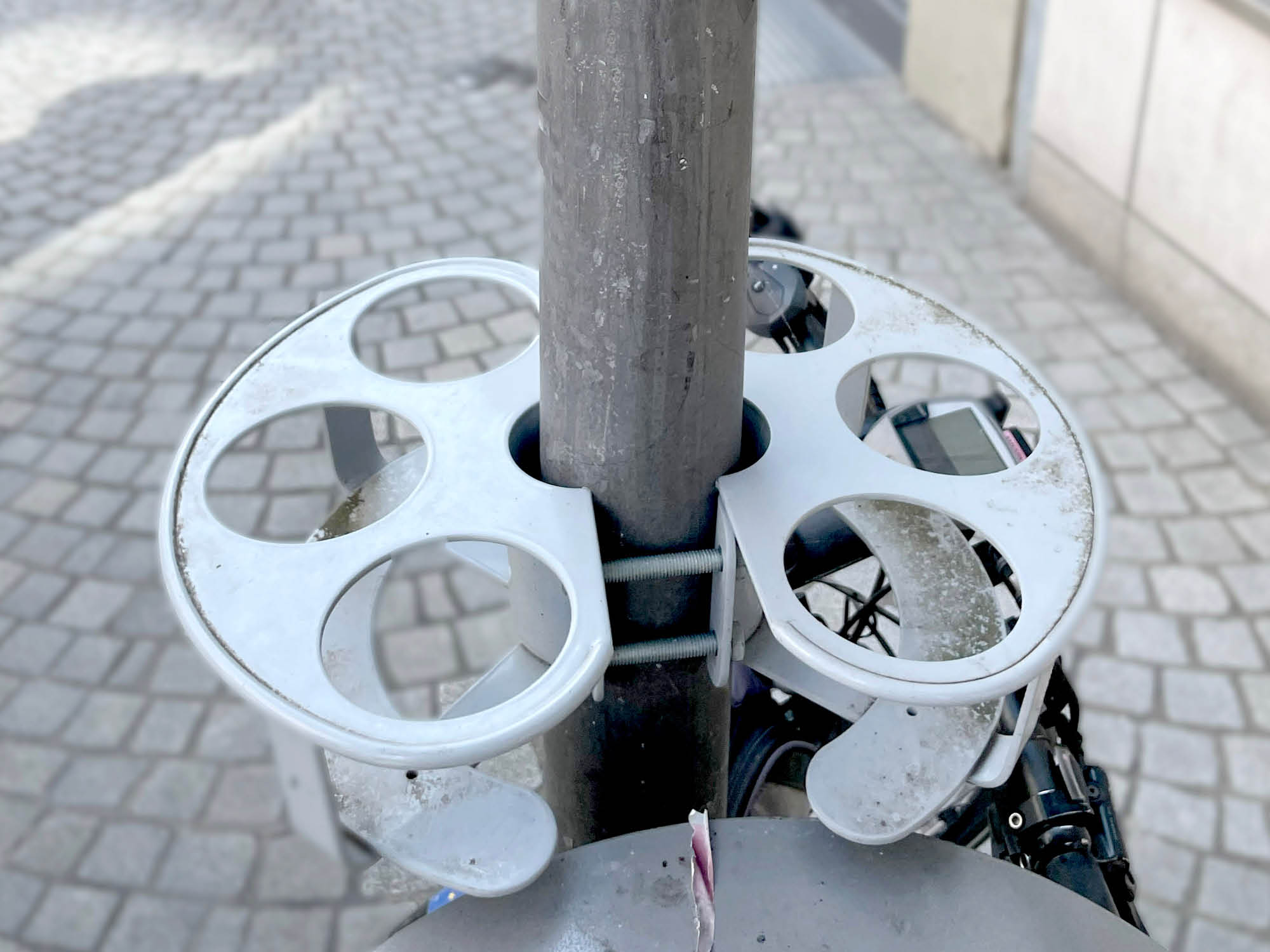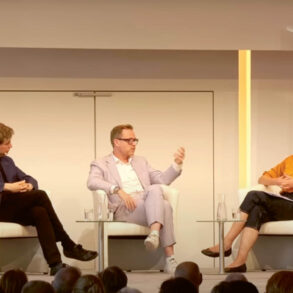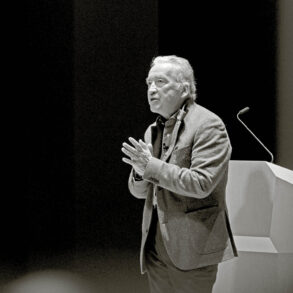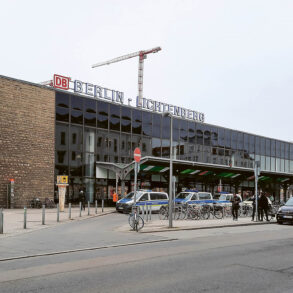The Pfandring [deposit ring], developed in 2012 by Paul Ketz, wraps around public rubbish bins to offer an easily accessible place to leave empties. With it, an otherwise discarded bottle becomes a gift for those who really need it, and an everyday problem is solved by a simple addition. The deposit ring is the wedding ring for ecology and social responsibility.
I saw the sign in the pedestrian area of Aschaffenburg, Germany, and stopped to take a photo with my cell phone. Someone had screwed it to a lamppost. It said that people could place deposit bottles in the container below. It wasn’t until I did some research later that I found out that these deposit rings can now be found in many cities. The invitation is not about cleanliness, like the other funny sayings on garbage cans: “I’m up for any rubbish,” “Ashes in my head,” and “Give me the leftovers.” The sign in front of me was in a whole other league; it was about empathy.
Yes, the invitation on the sign appeals to our compassion. The text reminds us of the people who cautiously shove their arms into garbage cans and rummage around for deposit bottles in order to carve out a living—not just homeless people but retirees, too. In 2003, a metal can deposit was introduced in Germany and all grocery stores are now obliged to accept empty containers. Large vending machines take over the job in supermarkets and print out a credit receipt that is redeemed at the checkout. Bottle and can collectors can earn between 10 and 20 euros a day—for some, it’s the only way to earn some extra money.
Designer Paul Ketz invented the deposit ring a good ten years ago. He calls it the “bridge between depositor and depositee.” According to Ketz, the deposit ring is in everyone’s best interest. In the past, deposit bottles have sometimes been placed next to garbage cans. This creates broken glass, which aggravates the street cleaners. With the deposit ring, the cleaning effort is reduced, as are CO2 emissions from improperly burned waste. It reduces waste in general and keeps the glass in the recycling cycle. Ketz has now developed special deposit rings for all types of garbage cans and calls them a “communication object for more conscious interaction.” In fact, the deposit ring is more than just an object for avoiding waste. Like the free book stands or collection points for expired food in some pedestrian areas, they are the technological garment for what flowers are in nature: inspiration for empathy. You may not have a deposit bottle with you to put in the ring, but perhaps you will make your own personal social invention on another occasion.
Staying True to the Idea
The magical threshold from student guerrilla action to professional waste prevention has long since been crossed. It took Ketz a lot of tenacity to get from the stage when newspapers praised his idea until the moment when local authorities finally decided to purchase the ring. It can now be found in 140 cities in Germany and the Netherlands. In an interview with Ecosign, Akademie für Nachhaltiges Design [Academy for Sustainable Design], Ketz waxed philosophical, “If you want to have a good idea, you need lots of ideas.” If you stay true to your idea, then something happens; “It gets plump.” He then apologized for waxing esoteric but emphasized that tomorrow we won’t be the same person as we are today. In this way, the idea also changes and strength arises from repetition. He searched for the right words and then summarized that it’s important to ask ourselves: Who am I? “I could be the best ‘I’,” he says, beaming into the camera. On his website, he uses a hidden camera to show how the small valuables made of glass or aluminum find new owners.
Pan to the Big Picture
Thirteen years ago, in his over 800-page work The Better Angels of Our Nature: Why Violence Has Declined, the evolutionary psychologist Steven Pinker used an impressive source study and an abundance of stories to show that human coexistence has become more peaceful and less violent in the course of its development. If, today, we see and read every day about death and harm, it’s because violent acts even from the farthest corners of the Earth find their way onto the TV screens in our living rooms and not because of a general increase in violence.
Pinker identifies three stages that have taken place toward a more peaceful society, three steps that overcome the lure of violence along with robbery, power, revenge, and ideology in society. The first was the Neolithic revolution—the change from a nomadic culture to a farming and urban culture. Whereas the nomadic groups lived by the right of the strongest and ten percent died a violent death, sedentarization and the birth of the state reduced this to one percent.
Five hundred years ago, when the five thousand counties and small states in Europe became only fifty states, there were fewer bloody conflicts. Prosperity through trade was more attractive than war. Pinker mentions humanism as the third step. With the printing press, education increased, and with the Peace of Westphalia in 1648, after thirty years of religious war, the understanding of religious minorities grew out of the high body count. May 8, 1945, to May 15, 1984, was the longest war-free period in Europe following the Roman Empire. Just as one distinguishes a non-racist attitude from an anti-racist attitude, the absence of war and the presence of peace are two different things.
The seemingly small gestures, from the wheelchair ramp to the markings for the blind at train stations to the deposit rings on garbage cans, are ambassadors of peace. This is not a peace decreed by law and civility, but a peace that speaks to the higher soul of each human being. Perhaps the wars of the twenty-first century won’t be overcome by the rejection of violence but by the longing for peace created by the individual.
Translation Joshua Kelberman
Photo Wolfgang Held









